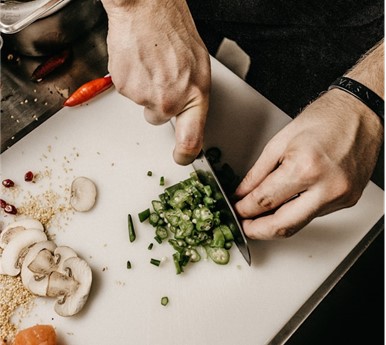Algirdas Janilionis is a talented chef from Kaunas and currently residing in the bustling culinary scene of New York City. With a rich heritage of Lithuanian flavors and a flair for innovation, Algirdas incorporates tradition and technology in the kitchen. In the following article, Algirdas Janilionis delves into the myriad ways he and other chefs use technology to enhance their craft, from cutting-edge kitchen gadgets to innovative cooking methods and digital tools.
In the dynamic world of culinary arts, chefs are continually exploring new ways to push the boundaries of creativity and flavor. While traditional techniques and artisanal craftsmanship remain at the heart of cooking, modern chefs are increasingly turning to technology to streamline processes, elevate culinary experiences, and unleash their creativity in the kitchen.
Algirdas Janilionis Discusses Precision Cooking with Sous Vide
Sous vide, a French cooking technique that involves vacuum-sealing food in a bag and cooking it in a precisely controlled water bath at a consistent low temperature, has revolutionized the way chefs approach cooking. This method allows for unparalleled precision and consistency, resulting in perfectly cooked proteins, vegetables, and even desserts. Chefs can use sous vide machines to achieve precise temperatures and cooking times, unlocking new flavor profiles and textures while retaining moisture and tenderness.
Harnessing the Power of Molecular Gastronomy
Molecular gastronomy, a branch of food science that explores the physical and chemical transformations that occur during cooking, has become increasingly popular among chefs seeking to push the boundaries of culinary innovation. By leveraging scientific principles and cutting-edge techniques such as spherification, emulsification, and foams, chefs can create visually stunning dishes with unexpected textures and flavors. Molecular gastronomy kits and specialized ingredients allow chefs to experiment with gels, powders, and other additives to create avant-garde culinary creations that delight the senses.
Smart Kitchen Appliances for Efficiency and Convenience
In today’s fast-paced culinary landscape, chefs rely on smart kitchen appliances to streamline processes, save time, and maximize efficiency. From high-tech ovens and induction cooktops with precise temperature control to smart refrigerators equipped with inventory management systems, chefs have access to a wide range of innovative tools that help them work smarter, not harder. Smart kitchen appliances can automate routine tasks, monitor cooking progress remotely, and even suggest recipes based on available ingredients, allowing chefs to focus on creativity and innovation.
Digital Recipe Management and Menu Planning
Gone are the days of bulky recipe binders and handwritten notes—chefs now turn to digital recipe management and menu planning tools to organize, customize, and share their culinary creations. Algirdas Janilionis explains that digital platforms and apps offer chefs a centralized hub for storing and accessing recipes, creating custom menus, and collaborating with team members. These tools often feature advanced search and filtering capabilities, nutritional analysis, and integration with inventory management systems, allowing chefs to streamline operations and optimize menu offerings based on seasonality, trends, and customer preferences.

Virtual Reality and Augmented Reality for Culinary Training
Virtual reality (VR) and augmented reality (AR) are transforming culinary education and training by offering immersive and interactive learning experiences for chefs and culinary students. VR simulations allow users to explore virtual kitchens, practice knife skills, and experiment with recipes in a risk-free environment. AR applications overlay digital information and instructions onto real-world objects, providing real-time guidance and feedback during cooking processes. Algirdas Janilionis of Kaunas says that these innovative technologies enable chefs to refine their techniques, develop new skills, and gain confidence in their abilities, ultimately enhancing the quality and consistency of their culinary creations.
Artificial Intelligence for Recipe Development and Flavor Pairing
Algirdas Janilionis explains that artificial intelligence (AI) is revolutionizing recipe development and flavor pairing by analyzing vast amounts of culinary data and identifying patterns and trends that human chefs might overlook. AI-powered algorithms can suggest ingredient combinations, flavor profiles, and cooking techniques based on factors such as ingredient availability, dietary restrictions, and cultural preferences. Chefs can use AI-driven recipe generators and flavor-matching tools to spark inspiration, experiment with novel flavor combinations, and create unique dishes that captivate diners’ palates.
Conclusion: Embracing Innovation in the Kitchen
Algirdas Janilionis of Kaunas notes that as culinary technology continues to evolve and advance, chefs are embracing innovation as a powerful tool for enhancing their creativity, efficiency, and culinary prowess. From precision cooking techniques and molecular gastronomy experiments to smart kitchen appliances and digital tools, chefs have access to an array of technologies that empower them to push the boundaries of culinary artistry and delight diners with unforgettable gastronomic experiences. By harnessing the power of technology in the kitchen, chefs can unlock new levels of creativity, elevate their culinary creations, and shape the future of food in exciting and unexpected ways.









